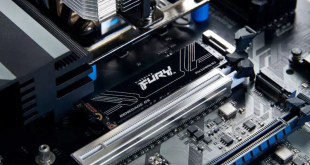OCZ haven't changed the packaging this year. The Octane still ships in a plain blister pack, which isn't as nice as their attractively designed SSD boxes. As previously noted, the pack can be opened and resealed without having to cut it apart with scissors or a blade.
Not much of a bundle. A little overview of the product and a ‘MY SSD IS FASTER THAN YOUR HDD' sticker.
The Octane drive ships in an attractive brushed aluminum metal chassis with an orange and black sticker on the front and a product specification sticker on the rear. OCZ offer 128GB, 256GB, 512GB and 1TB drives in this range and they all operate at different sequential speeds. The 1TB drive is the fastest, rated at 560MB/s read and 400 MB/s write. The 512GB drive is rated at 535 MB/s read and 400 MB/s write. The 256GB drive is rated at 535 MB/s read and 270 MB/s write. Finally the 128GB drive is rated at 535 MB/s read and 170 MB/s write.
Opening the chassis does void the warranty, so it would be best not to do this at home if you buy one of these drives. That is why we are here after all. The PCB itself is also bolted into the chassis from the inside, with four small screws and it is labelled with the OCZ logo, supplied directly from their fabrication plant. OCZ are using fast Intel manufactured 25nm MLC NAND which we have seen in a few other solid state drives this year.
The Everest controller is labeled IDX300M00-BC and supports NCQ, S.M.A.R.T. reporting, TRIM and garbage collection. This drive also uses nDurance technology to handle wear leveling, which will help prolong flash life.
The drive uses sixteen 32GB NAND chips, totaling 512GB raw capacity. Those with sharper eyes will notice multiple Texas Instruments branded chips across the PCB. The Octane 512GB drive uses a 512MB capacity Micron DDR3 SDRAM cache.
 KitGuru KitGuru.net – Tech News | Hardware News | Hardware Reviews | IOS | Mobile | Gaming | Graphics Cards
KitGuru KitGuru.net – Tech News | Hardware News | Hardware Reviews | IOS | Mobile | Gaming | Graphics Cards










Good drives, I actually bought a 128gb version in january. been flautless for me.
It is a good point that sandforce are known to fail, even if they are very quick. I know a lot of people on forums who got burned with OCZ and corsair branded sandforce drives.
I still think its a bad time to buy an SSD, later this year or 2013 will have the next generation which will completely saturate 6 Gbps when compressed and incompressed